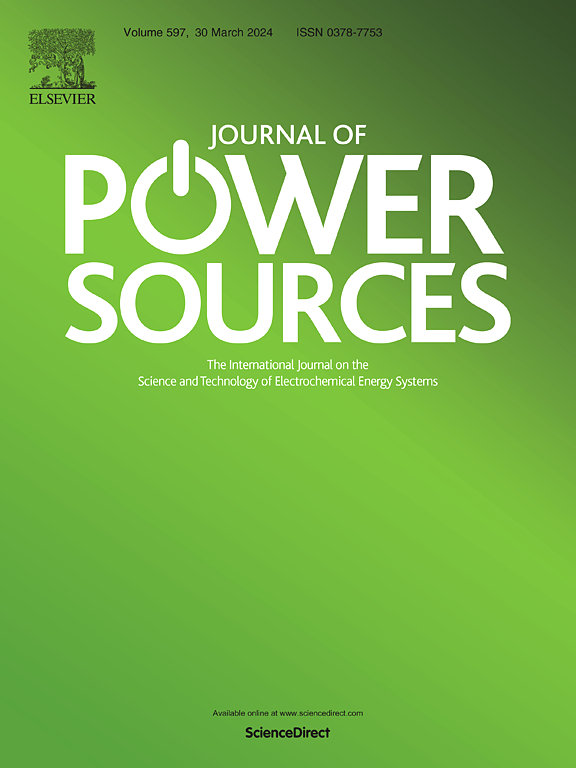Critical outlook on separator layers for solid-state lithium batteries: Solid electrolyte materials, anode interface engineering, & scalable separator production
IF 8.1
2区 工程技术
Q1 CHEMISTRY, PHYSICAL
引用次数: 0
Abstract
Energy storage as batteries is important for the electrification of several different technologies including transportation. For such applications, it is also clear that the state-of-the-art lithium-ion batteries need to be improved, especially in terms of energy density, safety, and other aspects. Solid-state batteries stand out as promising candidates to fill this gap, utilizing a solid-state electrolyte separator instead of flammable liquid electrolytes soaked in polymeric membranes. This review provides a comprehensive overview of several types of solid-state electrolytes (oxides, sulphides, halides, polymer, composite), with a special focus on sulphide argyrodite solid electrolytes as promising separators which offer the best balance of performance and processability. Furthermore, we discuss the stability issues of argyrodites with next generation anodes such as Li and Si, suggesting that interface engineering strategies by thin film methods are a scalable and effective way to mitigate the stability issues at the interface. Additionally, we give an overview of the process to make solid-state electrolyte membranes which involves several steps. Although many tools and approaches are available for the fabrication of these membranes, dry processing technology is identified as an important component to the successful realization of solid-state batteries.
固态锂电池隔膜的关键展望:固体电解质材料、阳极界面工程、可扩展隔膜生产
作为电池的能量储存对于包括运输在内的许多不同技术的电气化都很重要。对于这样的应用,很明显,最先进的锂离子电池需要改进,特别是在能量密度、安全性和其他方面。固态电池有望填补这一空白,它利用固态电解质分离器代替浸泡在聚合物膜中的易燃液体电解质。本文综述了几种类型的固态电解质(氧化物、硫化物、卤化物、聚合物、复合材料),特别关注了硫化物银汞石固体电解质作为一种很有前途的分离剂,它提供了性能和可加工性的最佳平衡。此外,我们讨论了银柱石与下一代阳极(如Li和Si)的稳定性问题,表明薄膜方法的界面工程策略是一种可扩展且有效的方法来缓解界面稳定性问题。此外,我们还概述了固态电解质膜的制备过程,其中包括几个步骤。尽管有许多工具和方法可用于制造这些膜,但干法处理技术被认为是成功实现固态电池的重要组成部分。
本文章由计算机程序翻译,如有差异,请以英文原文为准。
求助全文
约1分钟内获得全文
求助全文
来源期刊

Journal of Power Sources
工程技术-电化学
CiteScore
16.40
自引率
6.50%
发文量
1249
审稿时长
36 days
期刊介绍:
The Journal of Power Sources is a publication catering to researchers and technologists interested in various aspects of the science, technology, and applications of electrochemical power sources. It covers original research and reviews on primary and secondary batteries, fuel cells, supercapacitors, and photo-electrochemical cells.
Topics considered include the research, development and applications of nanomaterials and novel componentry for these devices. Examples of applications of these electrochemical power sources include:
• Portable electronics
• Electric and Hybrid Electric Vehicles
• Uninterruptible Power Supply (UPS) systems
• Storage of renewable energy
• Satellites and deep space probes
• Boats and ships, drones and aircrafts
• Wearable energy storage systems
 求助内容:
求助内容: 应助结果提醒方式:
应助结果提醒方式:


